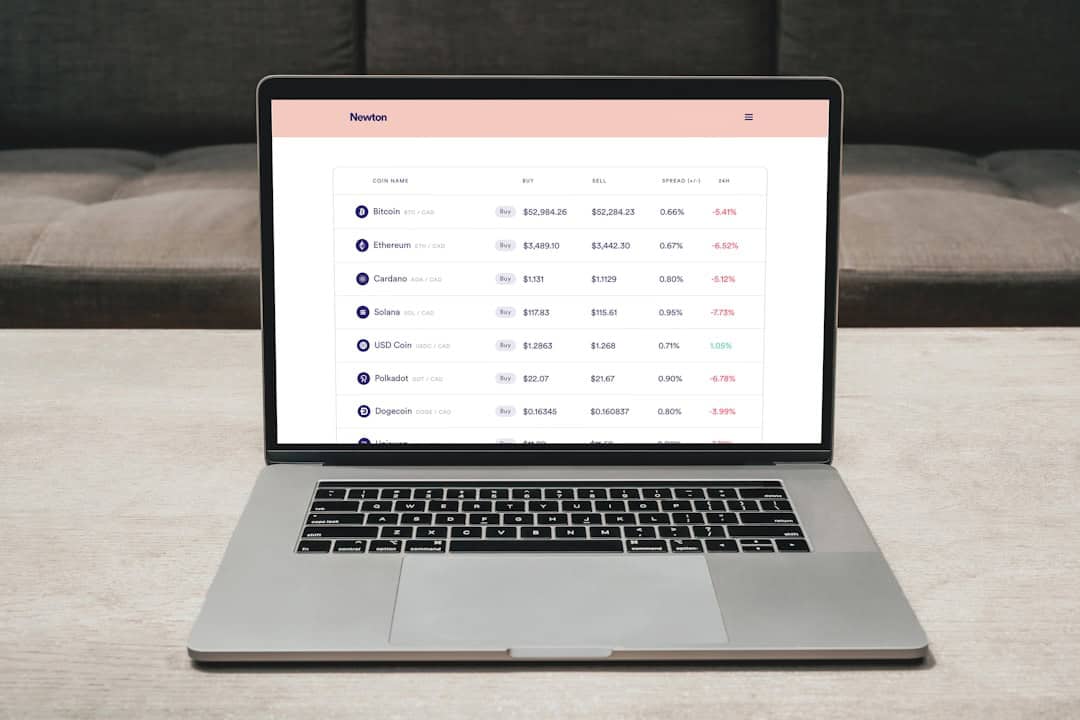Zero Trust Network Access (ZTNA) is a security framework that eliminates implicit trust based on network location. Unlike traditional security models, ZTNA requires continuous authentication and authorization for all users and devices, regardless of their position within or outside the corporate network. This approach ensures that access to resources is granted based on user identity and device status rather than network location.
ZTNA adheres to the principle of least privilege, granting users access only to the specific resources necessary for their job functions. This minimizes the potential for unauthorized access and lateral movement within the network in case of a security breach. The model also provides enhanced visibility and control over network traffic, enabling organizations to monitor and enforce security policies more effectively.
Implementation of ZTNA can be achieved through various technologies, including software-defined perimeter (SDP) and secure access service edge (SASE). These solutions create isolated, secure environments for each user and device, irrespective of their physical location. By adopting ZTNA, organizations can significantly improve their security posture, reduce the risk of data breaches, and better protect against insider threats and other cyber risks.
ZTNA offers several benefits over traditional security models, including improved security, increased flexibility for remote work, and better compliance with data protection regulations. As cyber threats continue to evolve, ZTNA provides a robust framework for organizations to adapt and maintain strong security measures in an increasingly complex digital landscape.
Key Takeaways
- Zero Trust Network Access (ZTNA) is a security model that eliminates the idea of trust based on location and assumes that every access request is a potential threat.
- Zscaler Zero Trust Access is important for securing networks as it provides secure access to applications and data, regardless of user location.
- Implementing Zscaler Zero Trust Access in your network involves deploying Zscaler Client Connector and Zscaler Internet Access to ensure secure access and visibility.
- Using Zscaler Zero Trust Access for network security offers benefits such as improved visibility, reduced attack surface, and simplified network management.
- Best practices for securing networks with Zscaler Zero Trust Access include implementing multi-factor authentication, segmenting access based on user roles, and regularly monitoring network traffic for anomalies.
The Importance of Securing Networks with Zscaler Zero Trust Access
Securing networks with Zscaler Zero Trust Access is crucial in today’s digital landscape, where cyber threats are becoming increasingly sophisticated and pervasive. Zscaler Zero Trust Access provides organizations with a comprehensive and integrated security solution that enables them to enforce strict access controls and policies based on user identity and device posture. This helps organizations mitigate the risk of unauthorized access and data breaches, while also ensuring compliance with industry regulations and standards.
Zscaler Zero Trust Access also offers seamless and secure access to applications and resources, regardless of the user’s location. This is particularly important in today’s remote work environment, where employees need to access corporate resources from various locations and devices. By implementing Zscaler Zero Trust Access, organizations can ensure that their employees can securely access the resources they need to be productive, without compromising security.
Furthermore, Zscaler Zero Trust Access provides organizations with real-time visibility and control over all network traffic, allowing them to detect and respond to security threats more effectively. This helps organizations proactively identify and mitigate potential security risks before they escalate into full-blown cyber attacks. Overall, securing networks with Zscaler Zero Trust Access is essential for organizations looking to enhance their security posture and protect their sensitive data and critical resources from cyber threats.
Implementing Zscaler Zero Trust Access in Your Network

Implementing Zscaler Zero Trust Access in your network involves several key steps to ensure a seamless and effective deployment. First, organizations need to assess their current network infrastructure and security posture to identify any existing vulnerabilities or gaps that need to be addressed. This may involve conducting a thorough security audit and risk assessment to understand the specific security requirements and challenges within the organization.
Next, organizations need to define their access control policies and requirements based on user roles, device types, and resource sensitivity. This involves determining who should have access to which resources, under what conditions, and from which locations. Organizations also need to consider factors such as multi-factor authentication, device posture assessment, and encryption requirements to ensure a robust and comprehensive access control framework.
Once the access control policies have been defined, organizations can then begin implementing Zscaler Zero Trust Access using the appropriate technologies and solutions. This may involve deploying software-defined perimeters (SDP), secure web gateways (SWG), or cloud access security brokers (CASB) to create a secure and isolated environment for each user and device. Organizations also need to integrate Zscaler Zero Trust Access with their existing security infrastructure and tools to ensure seamless operation and management.
Finally, organizations need to continuously monitor and evaluate the effectiveness of Zscaler Zero Trust Access in their network to identify any potential issues or areas for improvement. This may involve conducting regular security assessments, penetration testing, and incident response exercises to validate the security controls and policies in place. By following these steps, organizations can successfully implement Zscaler Zero Trust Access in their network and enhance their overall security posture.
Benefits of Using Zscaler Zero Trust Access for Network Security
| Benefits | Description |
|---|---|
| Enhanced Security | Zscaler Zero Trust Access provides secure access to applications, reducing the attack surface and preventing lateral movement of threats. |
| Improved User Experience | Users can access applications from anywhere without the need for a VPN, resulting in a seamless and consistent user experience. |
| Reduced Complexity | By consolidating networking and security capabilities, Zscaler Zero Trust Access simplifies the IT infrastructure and reduces operational complexity. |
| Cost Savings | Organizations can save on hardware, maintenance, and operational costs by leveraging Zscaler Zero Trust Access for network security. |
There are several key benefits of using Zscaler Zero Trust Access for network security. Firstly, Zscaler Zero Trust Access enables organizations to enforce strict access controls based on user identity and device posture, reducing the risk of unauthorized access and data breaches. This helps organizations protect their sensitive data and critical resources from insider threats and external cyber attacks.
Secondly, Zscaler Zero Trust Access provides organizations with real-time visibility and control over all network traffic, allowing them to detect and respond to security threats more effectively. This helps organizations proactively identify potential security risks and take appropriate action to mitigate them before they escalate into full-blown cyber attacks. Thirdly, Zscaler Zero Trust Access offers seamless and secure access to applications and resources, regardless of the user’s location.
This is particularly important in today’s remote work environment, where employees need to access corporate resources from various locations and devices. By implementing Zscaler Zero Trust Access, organizations can ensure that their employees can securely access the resources they need to be productive, without compromising security. Finally, Zscaler Zero Trust Access helps organizations ensure compliance with industry regulations and standards by providing a comprehensive and integrated security solution that enables them to enforce strict access controls and policies based on user identity and device posture.
This helps organizations mitigate the risk of unauthorized access and data breaches while also ensuring compliance with industry regulations and standards.
Best Practices for Securing Networks with Zscaler Zero Trust Access
Securing networks with Zscaler Zero Trust Access requires following best practices to ensure a robust and effective security posture. Firstly, organizations should define their access control policies based on user roles, device types, and resource sensitivity to ensure that only authorized users have access to specific resources under appropriate conditions. Secondly, organizations should implement multi-factor authentication (MFA) to add an extra layer of security by requiring users to provide multiple forms of verification before gaining access to resources.
This helps mitigate the risk of unauthorized access in the event of compromised credentials or devices. Thirdly, organizations should conduct regular security assessments, penetration testing, and incident response exercises to validate the effectiveness of Zscaler Zero Trust Access in their network. This helps identify any potential issues or areas for improvement in the security controls and policies in place.
Finally, organizations should continuously monitor and evaluate the effectiveness of Zscaler Zero Trust Access in their network by leveraging real-time visibility and control over all network traffic. This allows them to detect and respond to security threats more effectively, proactively identifying potential security risks before they escalate into full-blown cyber attacks. By following these best practices, organizations can enhance their overall security posture and protect their sensitive data and critical resources from unauthorized access and cyber threats.
Overcoming Challenges in Implementing Zscaler Zero Trust Access

While implementing Zscaler Zero Trust Access offers numerous benefits for network security, there are also challenges that organizations may face during deployment. One common challenge is ensuring seamless integration with existing network infrastructure and security tools. Organizations need to carefully plan and execute the integration process to avoid disruptions or compatibility issues that could impact the overall effectiveness of Zscaler Zero Trust Access.
Another challenge is managing user experience while enforcing strict access controls based on user identity and device posture. Organizations need to strike a balance between security requirements and user productivity to ensure that employees can seamlessly access the resources they need without unnecessary friction or delays. Additionally, organizations may face resistance from employees who are accustomed to more permissive access privileges within the traditional network security model.
It is important for organizations to communicate the benefits of Zscaler Zero Trust Access effectively and provide adequate training and support to help employees adapt to the new security paradigm. Finally, organizations may encounter scalability challenges as they expand their network infrastructure or accommodate a growing number of remote users. It is crucial for organizations to plan for scalability from the outset and ensure that Zscaler Zero Trust Access can accommodate future growth without compromising security or performance.
By addressing these challenges proactively, organizations can successfully implement Zscaler Zero Trust Access in their network and realize its full potential for enhancing network security.
Future Trends in Network Security with Zscaler Zero Trust Access
Looking ahead, there are several future trends in network security with Zscaler Zero Trust Access that are poised to shape the industry landscape. One key trend is the increasing adoption of cloud-based security solutions, such as secure access service edge (SASE), which integrate networking and security capabilities into a unified cloud-based service. This trend aligns with the principles of Zscaler Zero Trust Access by providing seamless and secure access to applications and resources from any location.
Another trend is the growing emphasis on zero trust architecture as a fundamental principle for securing modern networks. As organizations continue to embrace digital transformation initiatives and remote work arrangements, zero trust architecture will become increasingly essential for mitigating the risk of unauthorized access and data breaches. Furthermore, there is a rising focus on automation and artificial intelligence (AI) in network security operations to enhance threat detection and response capabilities.
By leveraging AI-driven analytics and automation tools, organizations can proactively identify potential security risks and respond to them more effectively, aligning with the real-time visibility and control capabilities of Zscaler Zero Trust Access. Finally, there is an increasing recognition of the importance of user-centric security models that prioritize seamless user experience while enforcing strict access controls based on user identity and device posture. As organizations strive to balance security requirements with user productivity, user-centric security models will become more prevalent in conjunction with Zscaler Zero Trust Access.
In conclusion, Zscaler Zero Trust Access offers a comprehensive solution for securing networks in today’s digital landscape by enforcing strict access controls based on user identity and device posture. By understanding the principles of zero trust architecture and following best practices for implementation, organizations can overcome challenges and realize the full benefits of Zscaler Zero Trust Access for enhancing network security. Looking ahead, future trends in network security with Zscaler Zero Trust Access are poised to further shape the industry landscape by emphasizing cloud-based solutions, zero trust architecture, automation, AI-driven analytics, and user-centric security models.
If you’re interested in learning more about the future of technology and its impact on networking, you may want to check out this article on future trends and innovations in the metaverse. It discusses emerging technologies that are shaping the metaverse and how they could potentially impact the way we access and secure networks, such as Zscaler’s zero trust network access.
FAQs
What is Zscaler Zero Trust Network Access (ZTNA)?
Zscaler Zero Trust Network Access (ZTNA) is a security framework that eliminates the concept of trusted networks and adopts a “never trust, always verify” approach to network access. It ensures that users and devices are authenticated and authorized before accessing applications and resources, regardless of their location.
How does Zscaler ZTNA work?
Zscaler ZTNA uses a combination of user and device authentication, identity-based access controls, and micro-segmentation to provide secure access to applications and resources. It leverages a cloud-based platform to enforce policies and inspect traffic, ensuring that only authorized users and devices can access specific resources.
What are the benefits of using Zscaler ZTNA?
Some of the benefits of using Zscaler ZTNA include improved security posture, simplified network access management, enhanced user experience, and the ability to enforce granular access controls based on user identity and device posture. It also enables organizations to adopt a zero trust security model without the need for on-premises hardware.
Is Zscaler ZTNA suitable for all types of organizations?
Zscaler ZTNA is designed to cater to the security needs of a wide range of organizations, including enterprises, government agencies, and small to medium-sized businesses. It can be tailored to meet the specific requirements of different industries and verticals, making it a versatile solution for securing network access.
How does Zscaler ZTNA differ from traditional VPN solutions?
Unlike traditional VPN solutions that provide network-level access, Zscaler ZTNA focuses on application-level access control. It does not require users to connect to the corporate network to access applications, and instead provides secure access directly to the applications and resources they need, regardless of their location. This approach reduces the attack surface and improves security.











Leave a Reply